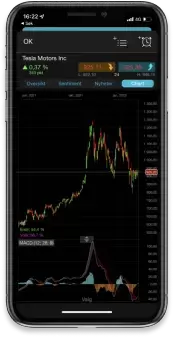Yesterday saw another subdued session for markets in Europe with the FTSE100 underperforming once again, with weakness in commodity prices as well as insurers and food retailers weighing on sentiment.
US markets on the other hand managed to finish the session higher with the S&P500 coming to within touching distance of last year’s high, while the Nasdaq 100 closed higher for the 4th day in a row, with this weeks’ focus being very much on today’s US CPI report.
Today’s Asia session saw a 34 year high for the Nikkei 225 as expectations of low rates helped buoy the Japanese market, pushing it above 35k, a rising tide that looks set push Europe higher on the open.
After a brief rebound in June which saw US CPI rebound from lows of 3%, to as high as 3.7% in September, price pressures have once again started to subside in the US economy, slipping to 3.1% in November.
PPI prices have been slowing even faster, and these numbers, which are due tomorrow fell to 0.9% in November indicating that there is a sharp disinflation bias starting to take hold in the US economy. This in turn has prompted the markets to front run the possibility that the US Federal Reserve would look to cutting rates as soon as its March meeting.
A few Fed officials have taken steps to pour cold water on these expectations especially after the market reaction to Powell’s comments last month, and while the US economy continues to perform reasonably well the argument for an early rate cut comes across as difficult to justify, especially given the continued resilience of the US labour market and the fact that Q3 GDP saw an expansion of 4.9%.
Today’s December inflation numbers have the potential to either add to the expectation of a move in March, or push it out until later in the year, with expectations of a tick higher to 3.3%, even as lower gasoline prices exert a loosening of financial conditions to the US consumer.
Yesterday, New York Fed President John Williams, who was one of the first Fed officials to pour cold water on the post Powell market reaction, reiterated his view that while policy was tight enough to ensure inflation fell back towards 2%, further cooling would be needed to justify a change of policy stance.
On core inflation the argument for a cut is harder to make given in November it was double the target rate at 4% and is only expected to slow modestly to 3.8%.
Weekly jobless claims data is expected to see a modest pickup to 210k from 202k.
The message being delivered by the Fed with respect to inflation as well as the prospect of interest rate cuts was one that was echoed by Bank of England governor Andrew Bailey yesterday. His comments to MPs on the Treasury Select Committee that the MPC needs inflation to return to target had little effect on the pound.
His additional comments however were slightly more instructive saying that the increase in household incomes in recent months could also add to caution about the likelihood that the central bank would be in a rush to cut rates given this easing mitigates some of the tightening effect of recent rate rises.
Once again it comes back to the same thing, markets want to see rate cuts and are hoping to see them by the end of Q1, with some forecasters suggesting that UK CPI could fall to 2% by April or May.
This may well happen but by the time we know for sure it will probably the middle of the summer which is when central banks are likely to feel more comfortable with the idea of going down the rate cut route.
Of course, the elephant in the room is China where prices are already in deflation territory. Friday morning’s inflation numbers for December could see this trend continue and get worse, which could then accelerate those trends more globally.
There is of course good deflation and bad deflation with the current declines in energy prices being the former and not the latter.
EUR/USD – edging back towards the top of its recent range with resistance at last week’s high as a well as 1.1030. Short term support still at 1.0875 and the 200-day SMA at 1.0830. A break above 1.1030 has the potential to target the December peaks at 1.1140.
GBP/USD – remains in the wider uptrend with support just above the 1.2600 area. We need to get above 1.2800 to target the 1.3000 area. Bias remains higher while above the 200-day SMA as well as support at the 1.2590 area.
EUR/GBP – finding support just above the 0.8570/80 area, with the main support at the December lows at 0.8545. Current rebound has resistance at the 0.8670 area, and behind that at 0.8720.
USD/JPY – heading back towards resistance at the 146.00 area with a break targeting the 148.00 area. Support currently at the 200-day SMA and the lows this week. While below 146.00 the risk remains for a move back to the 140.00 area.
Disclaimer: CMC Markets is an execution-only service provider. The material (whether or not it states any opinions) is for general information purposes only, and does not take into account your personal circumstances or objectives. Nothing in this material is (or should be considered to be) financial, investment or other advice on which reliance should be placed. No opinion given in the material constitutes a recommendation by CMC Markets or the author that any particular investment, security, transaction or investment strategy is suitable for any specific person. The material has not been prepared in accordance with legal requirements designed to promote the independence of investment research. Although we are not specifically prevented from dealing before providing this material, we do not seek to take advantage of the material prior to its dissemination.







